수업안: “나미에로 가는 길” 다큐멘터리 (2015)
후쿠시마 참사와 그 이후를 묘사한 텍스트가 우리에게 상상력을 발휘하여 사건의 시나리오를 구성해 보도록 한다면, 참사의 시각적 묘사는 그 광경을 더 적나라하고 직접적으로 드러낸다. “나미에로 가는 길”은 싱가폴 난양 공과대학의 과학기술학자 설피카 아미르(Sulfikar Amir) 교수가 제작한 짧은 다큐멘터리 영화이다. 이 작품은
a teaching resource for scholars and educators
![[Teach311 + COVID-19] Collective](https://blogs.ntu.edu.sg/teach311/files/2020/04/Banner.jpg)
후쿠시마 참사와 그 이후를 묘사한 텍스트가 우리에게 상상력을 발휘하여 사건의 시나리오를 구성해 보도록 한다면, 참사의 시각적 묘사는 그 광경을 더 적나라하고 직접적으로 드러낸다. “나미에로 가는 길”은 싱가폴 난양 공과대학의 과학기술학자 설피카 아미르(Sulfikar Amir) 교수가 제작한 짧은 다큐멘터리 영화이다. 이 작품은
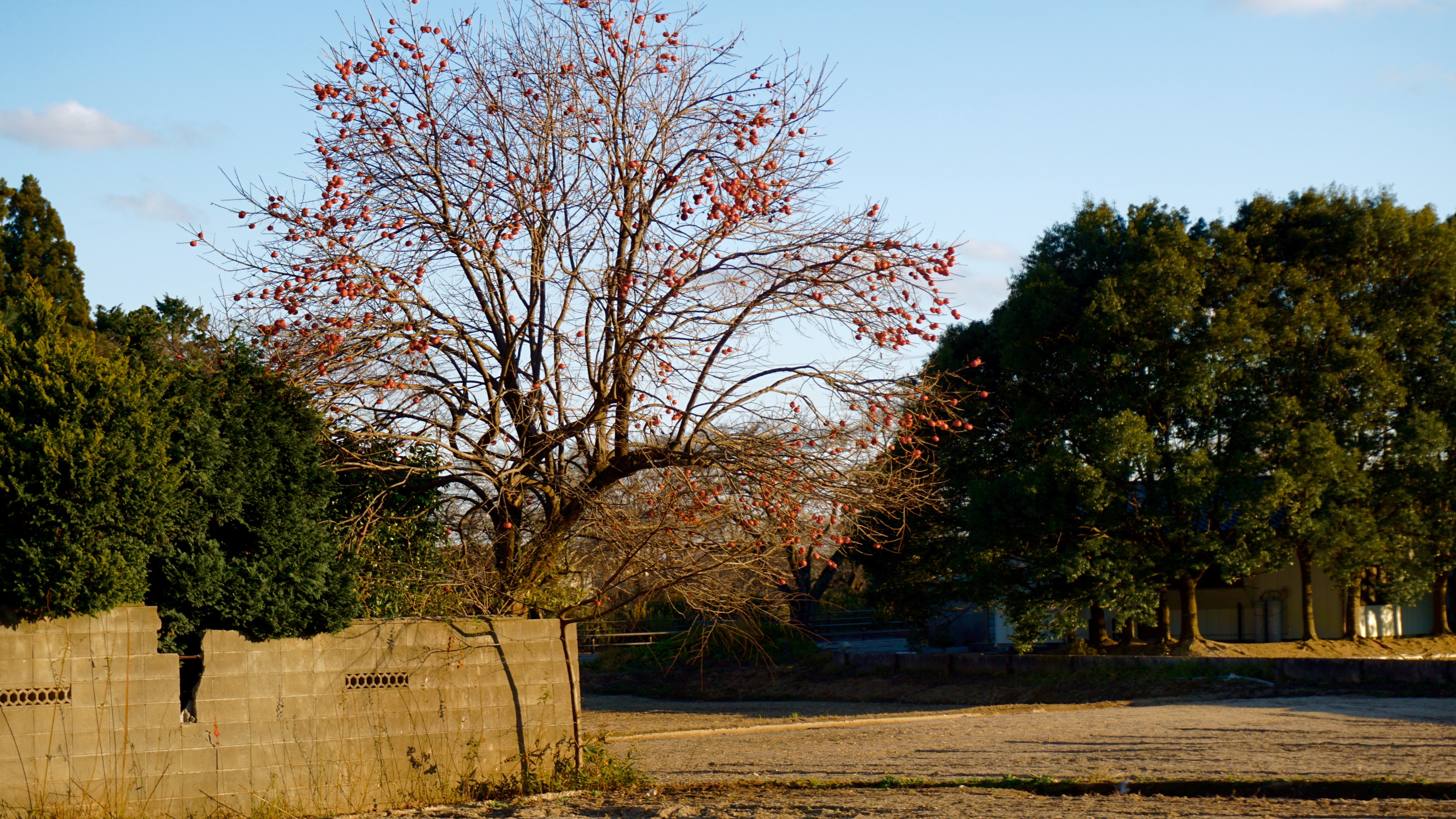
In the late fall of 2015, I took a study trip to the multiple disaster zones of northeastern Japan. The trip not only opened my eyes to the scale of the ruptures that occurred on March 11, 2011, but
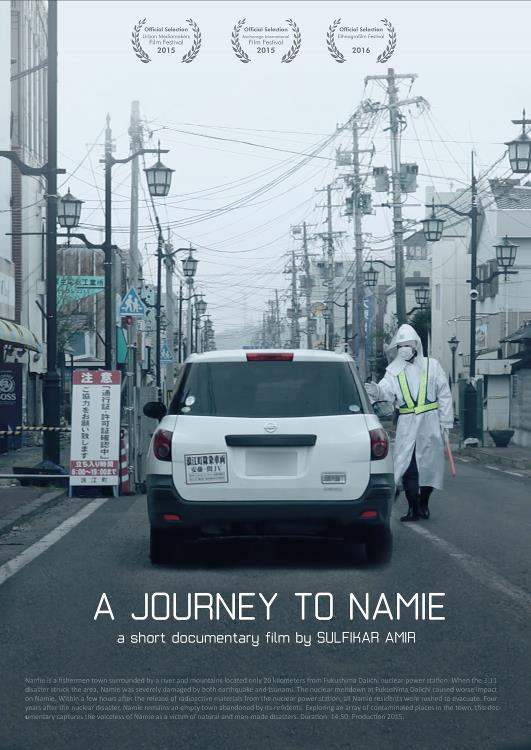
While textual representations of the Fukushima disaster and its aftermath provide a conduit for the imagination to construct the scenario, visual depiction renders the landscape with visceral immediacy. “A Journey To Namie” is a short visual documentary by Sulfikar Amir, a
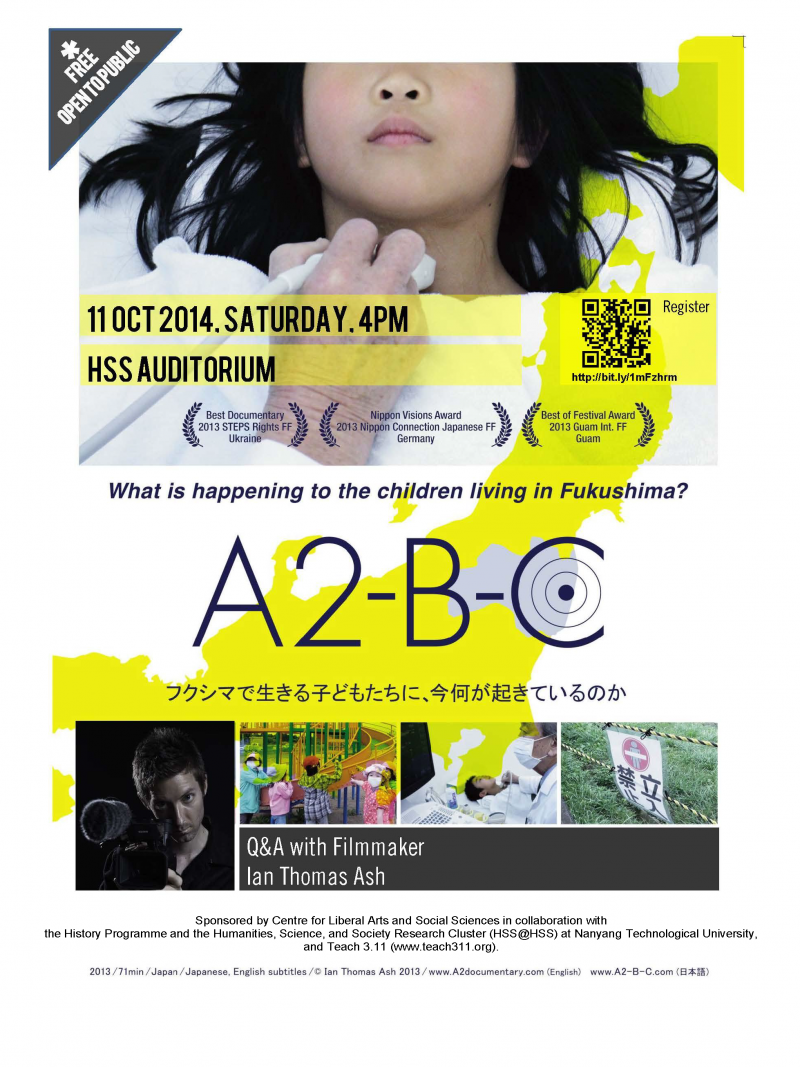
A2-B-C. Directed by Ian Thomas Ash. 2013. (Documentary, 70min.) This documentary by the Japan-resident American filmmaker Ian Thomas Ash focuses on children and parents living in areas of Fukushima prefecture contaminated by radioactivity. Focusing exclusively on these Fukushima families, the director

ドキュメンタリー映画『ヒバクシャ-世界の終わりに』(2003)、『六ケ所村ラプソディー』(2006)、『ミツバチの羽音と地球の回転』(2010)など、福島原発事故以前から原発問題を追っている鎌仲ひとみ監督による最新作。福島に残ることを選択した母親たちを中心に、子どもを被曝から守るための方法を探る人々の姿が描かれる。キーワードは「保養」である。
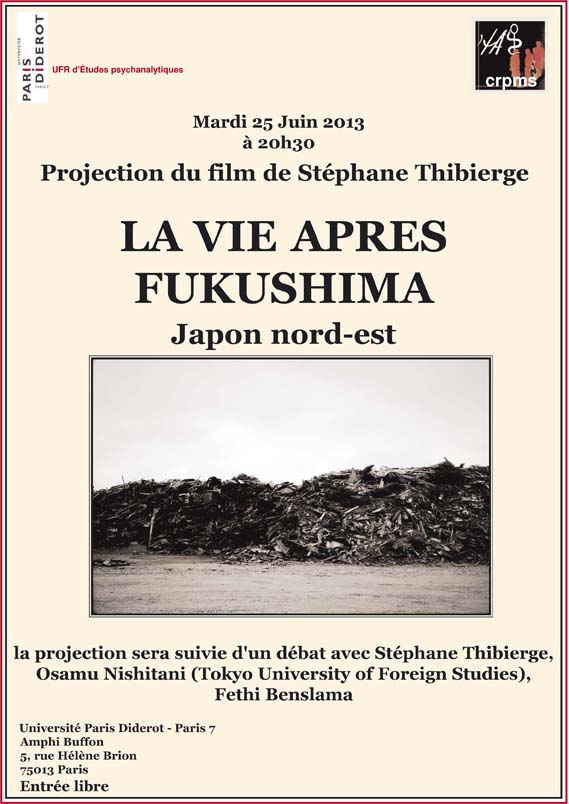
日本在住の精神分析医で写真家のフランス人男性が2011年3月11日以降の被災地における人々の日常生活を調査している。被災時、甚大な被害によって混乱し悲嘆にくれる人々の画像が世界中に流れた。

Thibierge, Stéphane. La vie après Fukushima. 2013. SODAPERAGA & Les Films du Paradis Productions. A French man—psychoanalyst and photographer who lived in Japan—investigates the daily lives of people in the region devastated on 11 March 2011 and after. At that time, the

티비에르쥬, 스테판.《후쿠시마 이후의 삶》(La vie après Fukushima). 2013. 정신분석가이자 사진작가인 한 프랑스인이 2011년 3월 11일 이후 황폐화된 일본 동북지역을 다시 방문한다. 이전에 일본에서 살았던 그는 쓰나미를 겪은 지역 주민들의 일상을 취재하기로 결정한다. “그 당시 전 스스로 이렇게 말했어요. 일본이
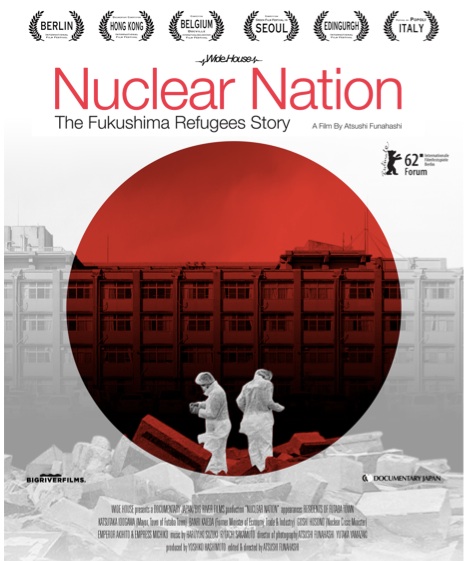
후나하시 아츠시. 《핵의 나라》(Nuclear Nation). 2012. 후쿠시마현의 작은 마을 후타바에는 “원자력은 우리 마을과 사회를 번성하게 합니다”라는 눈에 잘 띄는 아치형 표지판이 있다. 카메라는 돌무더기, 빈 관공서, 외양간에서 죽고 미라가 된 수십 마리의 소들이 있는 회색 풍경을 주욱 보여준다. <핵의

Judul asli: Nelson, Craig. 2011. “‘The Energy of a Bright Tomorrow’: The Rise of Nuclear Power in Japan.” Origins 4 (9) (June). http://ehistory.osu.edu/osu/origins/article.cfm?articleid=57. Origins, jurnal Universitas Negeri Ohio yang diterbitkan secara online (dengan slogan “Kejadian-kejadian Kontemporer Dalam Perspektif Sejarah) menerbitkan

Funahashi, Atsushi. 2012. Nuclear Nation. Documentary film. http://nuclearnation.jp/en/ “Atomic energy makes our town and society prosperous,” reads a sign over a prominent archway in the small town of Futaba, Fukushima. The camera pans over a grey landscape of rubble, empty public buildings, and

Aldrich, Daniel, James Platte, and Jennifer Jennifer. “Post-Fukushima Nuclear Politics in Japan, Part I.” Blog. The Monkey Cage, April 1, 2013. http://themonkeycage.org/2013/04/01/post-fukushima-nuclear-politics-in-japan-part-i/. In this three-part blog post, Daniel Aldrich, James Platte, and Jennifer Sklarew summarize development in Japanese politics, bureaucratic organization,
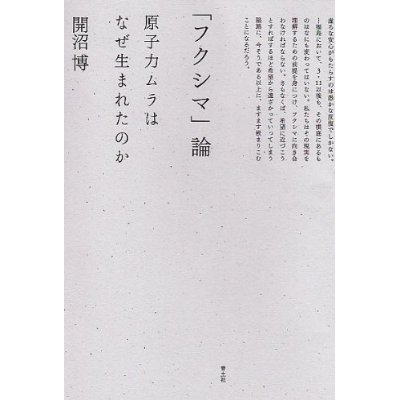
本書は日本の原子力の分析を通して日本の戦後成長における地方の自発的服従の歴史的形成過程を考察した学術書である。著者は、原子力を地方に導入したい「中央」とその原子力を受け入れ維持したい「地方」によって構成される原子力ムラという概念を提示しながら、「戦後成長の基盤」としての原子力(経済)「地方の統治装置」としての原子力(政治)「幻想のメディア」としての原子力(文化)という視座から、戦後日本における原子力を分析している。

Editor’s note: This week, we are pleased to feature contributions from Sofia University graduate students enrolled in Tak Watanabe’s 2011 spring semester classes in Tokyo, Japan. We begin with a film translation and subtitling project of a Japanese documentary that
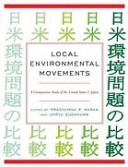
Karan, Pradyumna and Unryu Suganuma, eds. 2008. Local Environmental Movements: A Comparative Study of the United States and Japan. University Press of Kentucky. This edited volume consists of a number of interesting essays covering a wide range of issues and
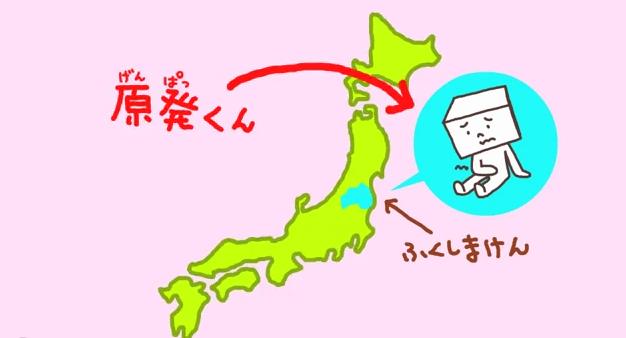
Hachiya, Kazuhiko. 2011. Unchi, Onara de Tatoeru Genpatsu Kaisetsu: Onaka ga Itakunatta Genpatsu-kun. うんち・おならで例える原発解説〜おなかがいたくなった原発くん [Explaining the Nuclear Accident with Farts and Poop – Nuclear Reactor Boy’s Upset Stomach]. YouTube video, 4:34 min, posted by GenkiRadio, Mar 16, 2011, http://www.youtube.com/watch?v=5sakN2hSVxA& This short animation by the media
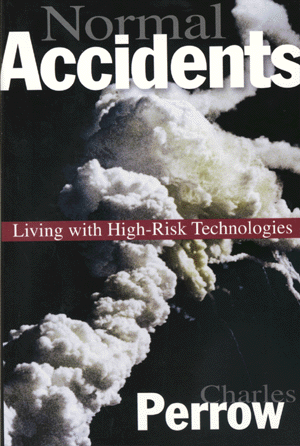
Perrow, Charles. 1984, 1999. Normal Accidents: Living with High-Risk Technologies. Princeton University Press. This classic of organizational sociology doubles as the cornerstone of a genre sometimes dubbed “disaster studies” and presents crucial insights for scholars of technological accidents and disasters in both
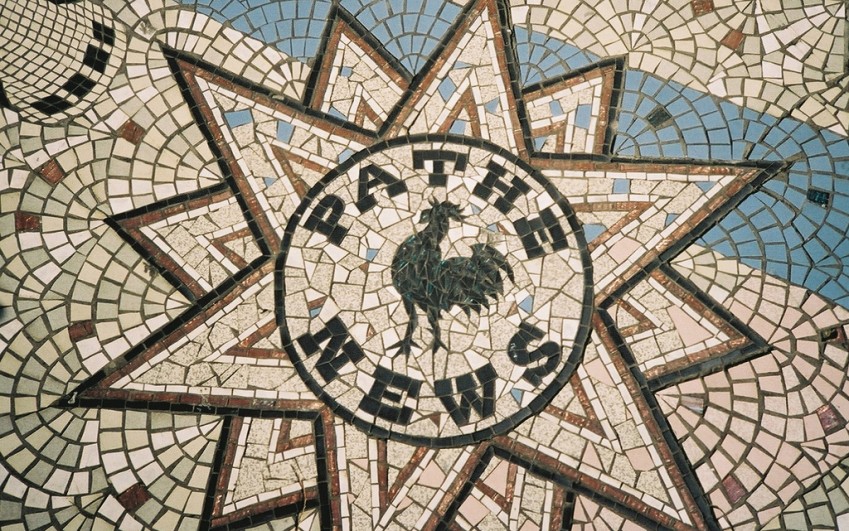
Footage from the following three short newsreels were selected in order to show the prevailing anti-nuclear sentiment in parts of the Japanese public during the 1950s and 1960s. At the height of the protests against the Treaty of Mutual Cooperation
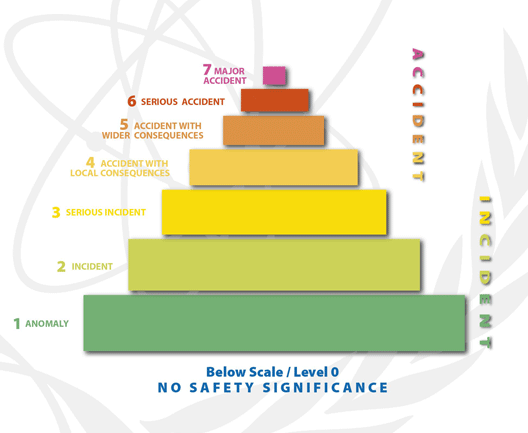
by Angie Boyce Ph.D. student, Cornell University, Department of Science & Technology Studies Note: This week’s posting schedule starts with a sample educational module. We hope this may inspire and encourage fellow educators to design and share educational modules to help teach about 3/11.